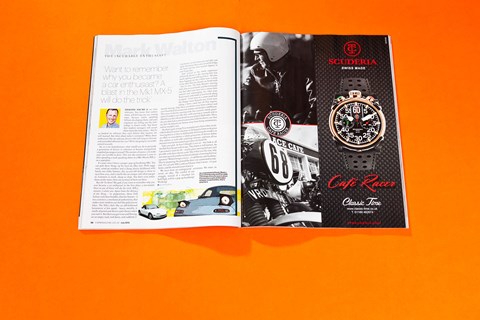► Mazda’s MX-5 and the art of steering feel
► Mk1 roadster vs the autonomous age
► Mark Walton blogs 
Imagine you’re a car manufacturer. You know that autonomous, self-driving cars are coming soon, because you’re spending billions developing them, and your engineers are telling you the technology is almost ready. You know that modern teenagers will accept them when the time comes – they’re so hooked on software they can’t believe that toasters are still manual. But what about today’s customers? What about enthusiasts like me and you, drivers who still cling to a bizarre and outmoded affection for cars? We’re not going to surrender control so easily.
So, as a car manufacturer, what would you do to persuade a generation of drivers to volunteer to become tranquilised, stupefied passengers instead? The answer, of course, is to make your cars terrible to drive. This was the conclusion I came to after spending a week spanking about in a Mk1 Mazda MX-5, on a 1996 plate.
It’s years since I drove a proper, pop-up headlamp Mk1. You can pick these things up for £500 on eBay now. With saggy seats, wind-up windows and a cheap, plastic dashboard with barely two clicky buttons, this 25-year-old design is closer to 1970 than 2015, and it smells like an antique sofa when you get in. Common as muck, cheap as chips. You don’t even notice them on the street, there are so many of them out there.
Back-to-basics in a Mk1 MX-5
But oh! To drive! My god, if you want to remember why you ever became a car enthusiast in the first place, a ten-minute blast in one of these will do the trick. MX-5 owners, I salute you. Apart from the delicacy of the thing – its proportions, those little Italian-style door handles, that low bonnet – it has a rawness, a mechanical authenticity, that makes more modern cars feel like polystyrene fakes. The MX-5 feels like an old-fashioned lawnmover at low speed – heavy, metallic, it smells of petrol and shivers and vibrates when you start it. But then you get it out and flowing on an empty road, roof down, and suddenly it transforms, to feel balanced and light and agile, like butter that came out of the fridge too hard and has now turned slippery in your fingertips.
And central to the whole experience (drumroll please) is the steering feel. Cue much sighing and rolling of eyes – this has been bugging me for a while now, a stone in my shoe that my friends are bored with – but it’s true. The little Mazda’s steering feels alive in your hands, and the resistance you feel when you turn into a corner feels natural and encouraging. It’s what your brain wants and needs as you hurtle along at speed – if you were in a canoe you’d feel the choppy water beneath you; if you were riding a horse you’d feel all that organic muscle moving. Take these sensations away from a driver and your brain feels disconnected, remote, emotionless, indifferent. The curse of electric steering racks has created a whole generation of modern cars like this, with steering as smooth and as effortless as the volume knob on your plastic DAB radio. These are cars that lack a critical connection with the driver, cars that are (let’s be honest) one button away from being autonomous, and we wouldn’t care.
The art of steering feel
So what’s gone wrong? Car manufacturers have either (a) decided it doesn’t matter anymore or (b) forgotten how to do great steering feel or (c) they’re deliberately distorting the market, in an effort to anaesthetise a whole generation of drivers before they replace us with cold, unfeeling software, and turn all car journeys into the horizontal equivalent of a hotel lift.
Take your pick. At first I thought it was (a) – but look at all the flak Porsche got with its 991. They know it still matters. So I presumed it must be (b) – maybe great steering feel just isn’t possible with these electric racks? But if that was the case, why not come up with another technical solution, if steering feel was a priority? Which brings us to (c) – it’s deliberate and insidious. They’re preparing the ground for their vast automated revolution. Try an early MX-5 and you’ll know what I mean – it’s just better, and the manufacturers know it.
We must form an underground resistance. We meet, in secret, on eBay. The symbol of our struggle, instead of a clenched fist held high, will be a pop-up headlamp! Winking!
